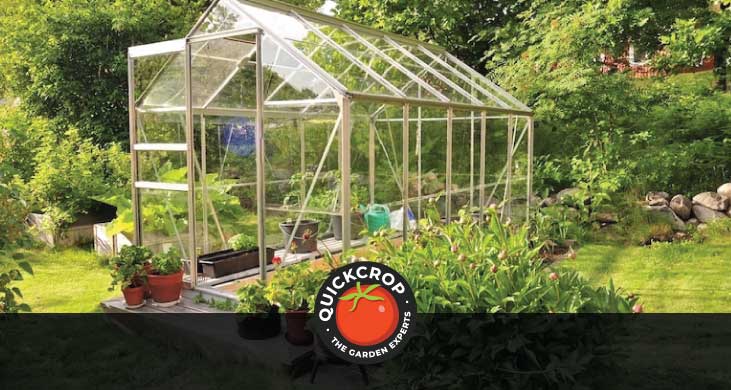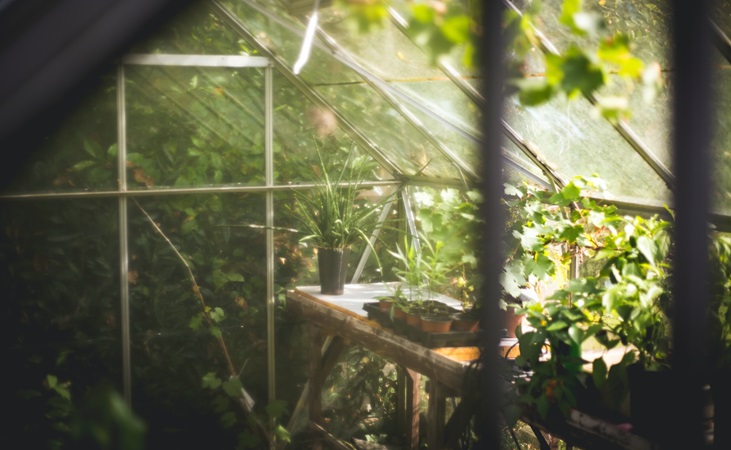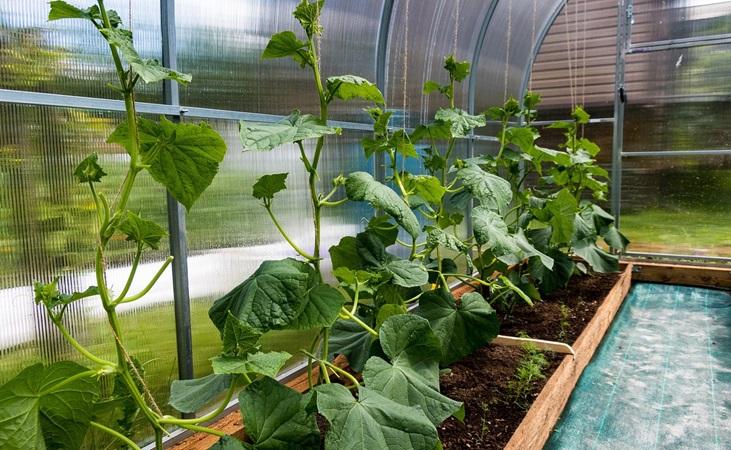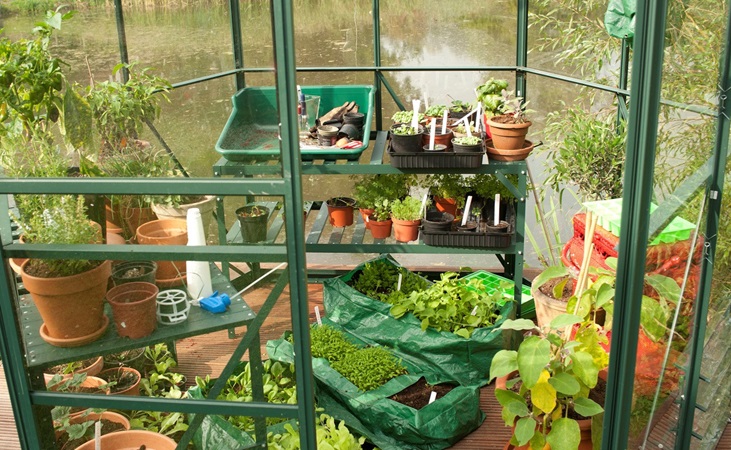How Do You Use A Greenhouse (for Beginners)?

The greenhouse has a long and interesting history. Did you know that a proto-greenhouse structure was designed by the Romans to support Emperor Tiberius's one-cucumber-a-day habit? Or that the Victorian era saw a boom in greenhouse usage, as it became a status symbol as much as a practical structure for growing plants in.
These days, the greenhouse continues to be a popular choice for gardeners seeking to overcome the limitations of outdoor growing. It may have been somewhat usurped by its close cousin the polytunnel, which tends to give more bang for your buck when it comes to total growing space - particularly in rural areas. But the greenhouse still has a very unique appeal, and an attractive aesthetic that a PVC polytunnel can't quite match. It's a great option for the smaller confines of an urban garden and it allows you to successfully grow some of the more 'exotic' vegetable options.

Freya Greenhouse - 8ft Wide
View Product
Why Use a Greenhouse?
At its core, the main benefit of the greenhouse is that it allows you to create - and often fine-tune - an indoor climate for growing plants and crops. This allows you to extend the growing season in cooler climates such as in the UK and Ireland. It can also give you a handy headstart as you approach the ‘main’ growing season. Seedlings can be started within the greenhouse and transplanted outdoors as the temperatures start rising in spring.
The window glazing on greenhouse frames can be made from glass, polycarbonate or other materials. Whatever it might be made from, the intention is the same: to enhance the amount of sunlight available to the plants inside. As the plants and inner surfaces of the greenhouse absorb the sun, heat is retained and ‘captured’. This process is of great importance during the cooler months of the year, when cloudy conditions and gloomy weather can drastically cut short the number of hours of sunlight or warmth that your crops can benefit from.

A greenhouse can be used all year round, depending on what crops you plan to grow and what their needs are (e.g. sunlight, irrigation, humidity). It can also be used to supplement your outer garden area, allowing you to propagate seeds before they’re ready to be planted outdoors, or to store crops over the winter period. Whether it’s overwintering and storing tender crops, getting an early spring headstart on your crops, providing a warm environment for heat-loving plants or growing salad crops in the autumn sun - there’s a place for every season.

Jupiter Greenhouse 8 ft Wide
View Product
Overcoming Climate Limitations
The enclosed space of the greenhouse means that your crops are not at the mercy of extreme weather changes. Instead they will benefit from more moderate and consistent conditions, provided you stay on top of your end of the bargain (namely: providing suitable irrigation, ventilating when necessary, and ensuring sufficient humidity). One thing that you do need to be very wary of - particularly in summer months - is the possibility of excessive heat from the sun that can stress plants (heat shock) or even kill them. The main strategies for tackling overheating include shading, ventilation and ‘damping down’ surfaces. The latter refers to wetting or pouring water onto the surfaces of the greenhouse (floor, benches), which raises the humidity as the water evaporates.
The greenhouse is a good place for crops that fare better indoors in cooler Atlantic-type climates - such as cucumbers, asparagus or peppers. It can also be used to grow crops out of season or to grow the kind of exotic, unique plants that simply aren’t possible outdoors even in the summer.

Extend the growing season
Gardening isn’t always the kind of exact science we want it to be, and life can frequently get in the way. Before you know it you look at the calendar and see that you’ve fallen behind on your planting plans for the year. This is where one of the big benefits of a greenhouse comes in. You can add weeks to the traditional ‘end’ of the growing season - a bit like getting an extension on that essay you’ve been procrastinating with.
It works on both ends, too: you can hit the ground running by getting a start on seed propagation while the outdoor garden is still lying dormant. Greenhouse benches provide a perfect space and a stable atmosphere for seed trays to germinate. In cooler conditions you can use soil warming cables or heat mats. Some specially designed thermostat cables can even constantly adjust to keep the soil at an optimum temperature. This, combined with shelter from the outdoor elements, will provide ideal growing conditions.

Soil Warming Cable - Biogreen - 6m, 10m 25m
View Product
Pest Protection
When it comes to protection from pests and disease, the greenhouse can be something of a double-edged sword. On the one hand, the enclosed space means that your plants are less exposed to common garden pests. On the other hand, when these critters do find their way in or when disease gains a foothold - the problem can multiply fast. For this reason, it’s important to be vigilant and watch out for any early signs of aphid infestation, plant rot, mould etc. Ensure that the space receives enough ventilation in warm, humid conditions. If you see a developing pest problem, let some beneficial insects loose (such as ladybirds) inside the greenhouse and let them do their worst. The recurring theme you’ll be noticing by now is that successful greenhouse growing rewards the time that you put into it.
Storage and Workspace
Overwintering plants can be stored in the greenhouse and thus be protected from the worst weather excesses. Greenhouse benches can be used as workspaces for potting, propagating and organising, while lower shelves can be used for bags of compost and plant fertiliser. The greenhouse can also provide a storage space for garden tools, or for plants and pots that you no longer have space for in your house. You can even hang a line and use the space to dry clothes (the greenhouse provides all-year-round ‘good drying weather’).

Potting Bench
View Product
A Refuge
Leaving all the technicalities aside, the greenhouse is above all else a place you should enjoy spending time in. Even more so than a polytunnel (although there’s no accounting for taste), a typical greenhouse kitted out with attractive foliage can lift the spirits. Spending time in this peaceful enclosed space, attending to your plants and watching them grow steadily, learning new skills as you go - it’s a fulfilling, mindful hobby. In a way, it’s a natural, colourful exhibition that you’ve created or grown from seed.





